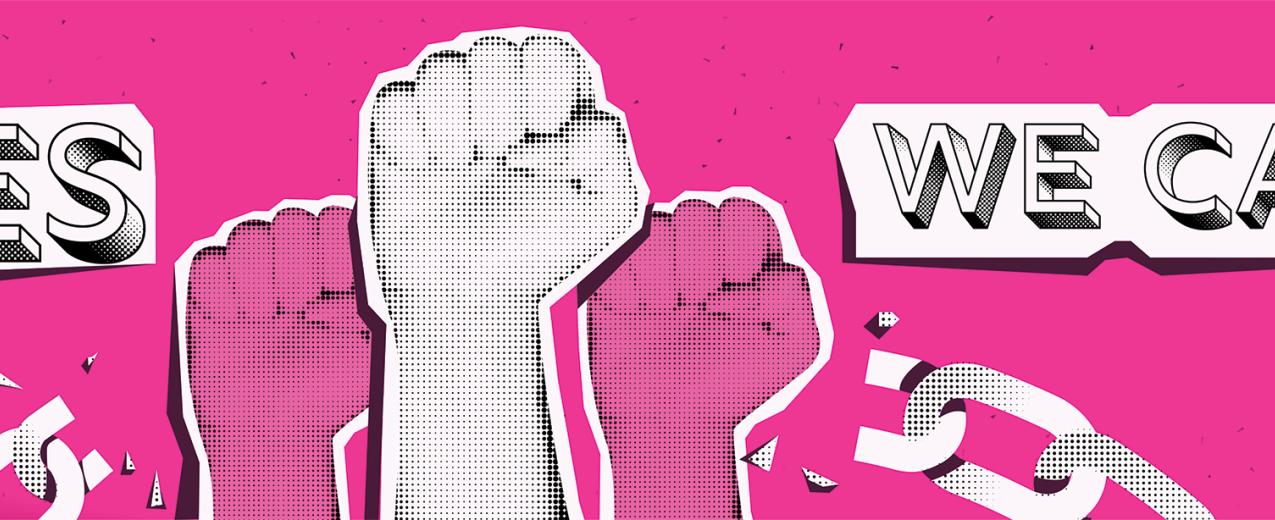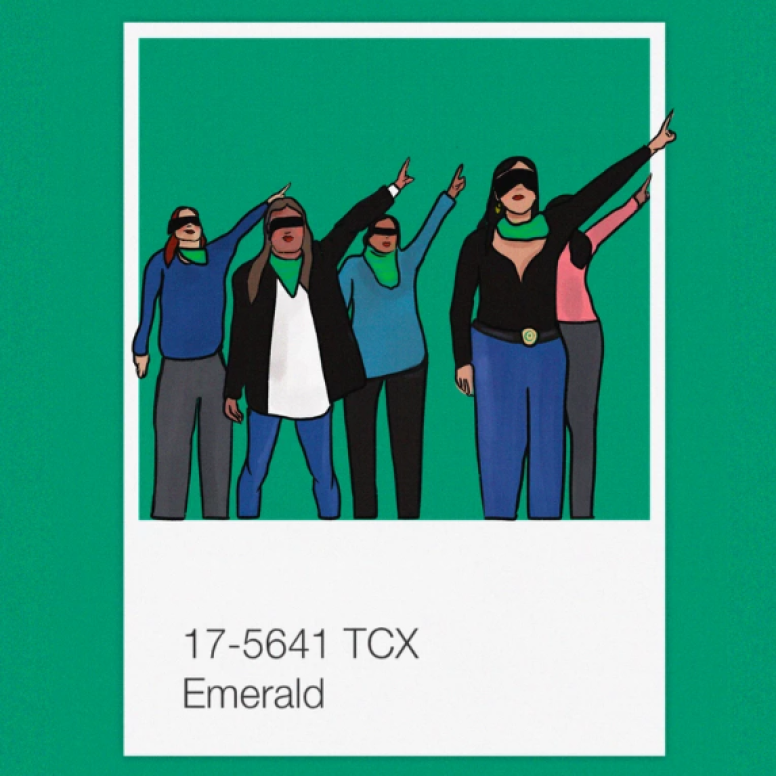
- Blog
- 11 Agosto 2022
How feminist artivism and social media inspires change in gender norms
- Author: Ipsita Divedi
- Published by: ALIGN
Digital space as a forum for movement-building
Digital activism has carved a new path for feminism. Social media has emerged as a key tool in mobilising people and organising both offline and online protests. Twitter storms have gone viral with digital mobilisation influencing policymaking and public opinion. Most recently, digital platforms have been painted green as abortion rights movements have taken over the Internet to fight against the overturning of the historic Roe vs Wade Supreme Court decision.


As sexual and reproductive health activists are protesting against this regressive decision to control the right to access safe abortion, we cannot miss the powerful visuals that are igniting discussions. They are making visible the diverse experiences of resistance in response to patriarchal institutions trying to control the bodies of women and gender non-conforming people. Activists are creating toolkits, guides and posters in collaboration with sexual and reproductive health rights (SRHR) organisations to increase access to safe abortion.


This speaks to my own experience of being active on the internet with other young feminists who are constantly building spaces, amplifying voices and developing new perspectives about feminism They are re-conceptualising what activism means. Today, young human rights defenders and gender rights activists are redefining activism by exploring the intersections between art and activism.
Art and activism = artivism
Visuals have the power to break boundaries and show us the reality that we want to create.
Visuals have the power to break boundaries around gender norms such as silence around menstruation, and help show us the reality we want to create – a world where binary and heterosexist norms do not constrain us. This perspective is shared by like-minded communities building safe spaces together, where we share tools, knowledge and resources to give visibility to the experiences of young people. While online activism can be lonely, these online communities show that we are not alone. Thus, digital activism plays a vital role in consciousness-raising as well as building networks of solidarity and support.


I first came across this term, Artivism, in 2020 and instantly identified with it. For me, art is a powerful tool for change. Artivism combines the creative power of the arts to invoke emotions and drive social change in a strategic way. It comes in many forms, and it covers many issues, but it always sparks discussions about issues that affect us every day and has become a part of our daily life. During the pandemic, we saw an entire generation of people using Instagram, Twitter, and Facebook to share information and strive for social justice. Social media offers the potential to reach a much larger audience, transcend borders and engage people who truly feel connected to the movement.
My own illustrations depict the values of kindness, solidarity, and resilience inherent to our shared feminist worldview, working towards a future where oppression based on sex no longer exists. As a young feminist illustrator, I navigate the digital activism space to challenge sex-negative views, unequal power dynamics and myopic visions of equality. As I work on the intersections of art and advocacy, I believe my feminist goals go hand in hand with diversifying art by making it more inclusive, accessible and youth-focused. My work is inspired by feminist movements around the world who campaign on issues from abortion access to climate action, and I love collaborating with them – constantly learning from how they mobilise their campaigns in creative ways. In turn, I can amplify the perspectives of activists spearheading social movements to bring meaningful change, as narrated in my illustration series for ALIGN on the power of period activism.


Shadow-banning activists on social media
My account has been shadow-banned multiple times for the content that I post on my Instagram…
There are many challenges facing youth activists online. These are not just limited to sexist comments, but also the institutionalised patriarchy that you face while using social media. Online platforms are saturated in consumerism and reproduce deeply entrenched patriarchal systems and norms. While Facebook claims to be a democratic space promoting free speech, it is notorious for its censorship of SRHR and women's bodies. My account has been shadow-banned multiple times for the content I post on my Instagram. My activities are disabled, there are sharp dips in my engagements and a stark difference in the visibility of my content. Whenever I use hashtags such as #genderequality #sexuality #feminism, my growth online becomes limited.
In collaboration with two other Pleasure fellows, I work on 100 Stories of Pleasure: a celebratory digital anthology with a curated Instagram account of received submissions. Through this work, we combat the sex-negative narratives around pleasure. We challenge the patriarchal male-gaze and heteronormative ideas of sex that prioritise men's pleasure, over-sexualise women's bodies, and pathologise queer sexual experiences in a strict gender hierarchy where people of colour are also exoticised or fetishised. Instead, we celebrate liberating, inclusive and diverse experiences of pleasure.
As three women talking about sex on the Internet, we were aware that we were stepping into a hypersexual and male-oriented space. To build a safe space, our major concern was for our users, especially women and non-binary individuals who are often bullied for sharing their fantasy or even commenting. Either they are policed and shamed, or they are targeted with lewd comments by male users. Our own posts are challenged by algorithm and arbitrary policy guidelines. Very often, our posts are removed by Instagram as they supposedly violate the guidelines – particularly posts that mention sex, sexuality, genitalia, etc. Globally, pleasure and SRHR activists face the same barriers to communicating about sex, pleasure and abortion.


Online activists refuse to be silenced
This censorship and policing cannot silence our activism. Activists have found innovative ways to protest against patriarchal regimes and social media helps audiences to access alternative worldviews created by feminist artists. To trick the algorithms and their sensitivity to words such as sex, pleasure and bodily autonomy, feminists often use coded words or characters. Abortion activists on Tik Tok and Instagram provide information on legal and safe services by using words such as ‘legal camping’ and special characters such as ab*rtion – where camping refers to helping people seek abortion outside their country/state.
Artivism is our next best solution as it conceptualises complex theories visually and fully, in an accessible way for a large audience. Many artists, like me, use hope-based communications to create alternative solutions to present-day problems. Rather than put more effort into sharing how patriarchy objectifies, we create images that represent our shared values of what a gender-equal society will look like. This also avoids reinforcing the existing gendered values by helping people create their own norms and shift gendered narratives that permeate their lives.
Artivism is our most creative solution
Artivism is an ongoing process of unlearning traditional methods of communication while learning more creative and sustainable ways to communicate. Art can transcend borders and language to create the change you want to see. Activists globally should come together to re-imagine a world with feminist principles of love, collective care and equality at its core. In this world, we are hopeful, we are shifting power structures and we are always challenging gender norms!


About the author
Ipsita Divedi is a young feminist artivist and researcher currently based in New Delhi, India. She combines her love for art and her passion for gender equality to create advocacy messages around feminism, social justice and human rights. Her work advocates actively for sexual health rights, pleasure and youth leadership. She uses hope-based communications to create a shared worldview that embraces love, empathy and solidarity. She works part-time as an Advocacy Assistant Coordinator for the International Planned Parenthood Federation East & South East Asia & Oceania region (IPPF ESEAOR) and is a Pleasure Fellow with The Pleasure Project.
- Tags:
- Social movement, Social media
Related resources
Blog
19 Diciembre 2024

Report
19 Noviembre 2024

Report
30 Septiembre 2024
